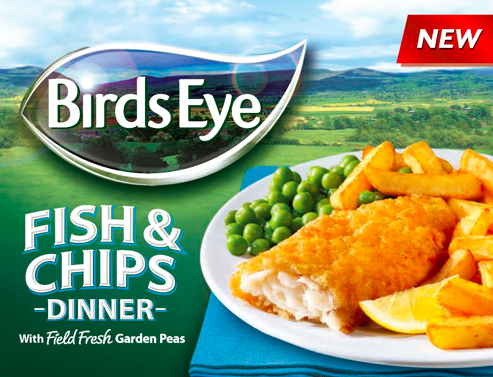 our categories when it comes to mealtimes according to Birds Eye, which has conducted a study to reveal the way real people eat and interact at meal times.
our categories when it comes to mealtimes according to Birds Eye, which has conducted a study to reveal the way real people eat and interact at meal times.The Big Mealtime Audit, which was unveiled to mark the new Birds Eye ‘Food of Life’ campaign, looks at how consumption habits have changed over the last 20 years.
The study found that there are four different types of eater in Britain today – ranging from the Rep-eat-ers who has a meal repertoire of three meals to the Social-eats, the foodie who enjoys social get-togethers and typically has friends and family over for dinner at least twice a week.
The Free Rangers was also identified as a common type of eater in the UK with one in five (20 per cent) of people eating up to eleven times a day.
To better understand the nation’s mealtime habits, Birds Eye has appointed famous photographers to undertake a documentary survey of how Britain eats today.
Martin Parr, who has famously captured the personal tastes and habits of Britons for more than 22 years, will be spending the next four months producing a unique snapshot of British mealtimes.
As well as travelling the country, finding subjects to take part in the project, three members of the public will also be able to win the chance to be photographed by submitting pictures of their mealtime moments to birdseyeview.birdseye.co.uk
According to the findings, over a quarter of Brits (26 per cent) now eat their breakfast on their commute while one in ten (ten per cent) eat their dinner in the office or in the car.
A further 85 per cent said they regularly snack to get them through the day.
At home, Brits spend on average just 25 minutes around the dinner table.
The most common dinner table topic is family (32 per cent) while almost one in seven (15 per cent) use their meal to talk football.
Nearly half of Brits (49 per cent) believe mealtimes are the best time in the day for conversation.
Professor Peter Jackson who contributed to the study said:
“British people have moved on from the traditional three meals a day to a much less consistent pattern of infrequent meals.
“While there is a ‘moral panic’ around the decline of families eating together, in reality this is exaggerated as many British people still share meals with family members on a regular basis.”
Margaret Jobling, Birds Eye Marketing Director said:
“Mealtimes are still clearly the glue that holds families and friends together, even though the nation’s eating and consumption habits have changed and we might not be sitting down for the traditional three square meals a day.
“The research, combined with the Martin Parr study will help us to understand and celebrate this as we’re passionate about creating food that can be enjoyed every day by everyone.”
Martin’s work and tour will be available to be viewed at an exhibition in London from September.
THE FOUR TYPES OF EATER
Rep-eat-ers’ are those that know what they like to eat and regularly consume the same meal up to three days in a row (20 per cent).
Conscious about food wastage, over three quarters (77 per cent) feel bad when throwing away out-of-date food and as a result 27 per cent will only have a handful of meals that they roll out each week.
‘Social-eats’ are big on food and social get-togethers.
Knowing how important time around the dinner table is (66 per cent), ‘Occasion Eaters’ have friends and family over as much as twice a week (13 per cent) and shop weekly to plan for these get-together meals (66 per cent).
Conversation topics tend to focus on family, work and school, with only (15 per cent) using meals to discuss their relationship.
‘All Day Grazers’ appreciate food but are unable to fit in three square meals a day and more often eating little and often – as much as eleven times a day.
Over a third (34 per cent) have brinner – breakfast for dinner – and 42 per cent snack late at night.
‘Free Rangers’ are made up of time-poor Brits who regularly eat on the go and out of the home due to work pressures.
Over a quarter eat their breakfast on the commute (26 per cent), and one in ten (11%) eat dinner in the office.





